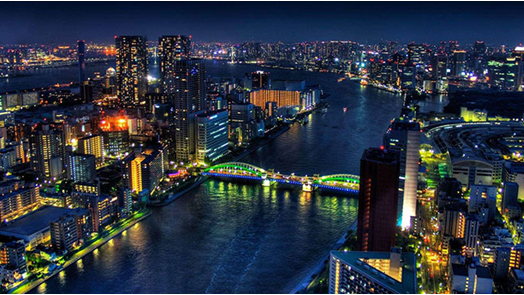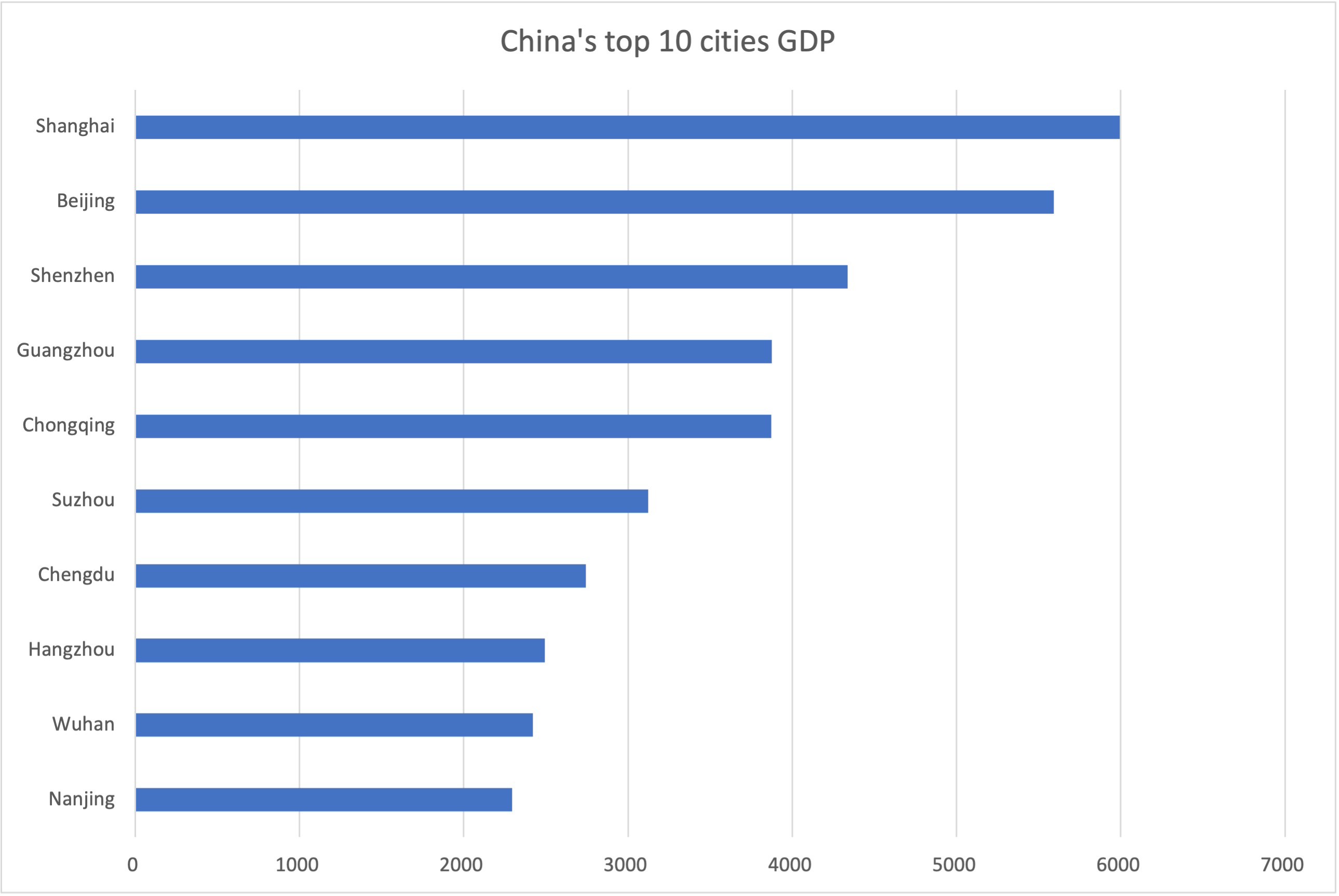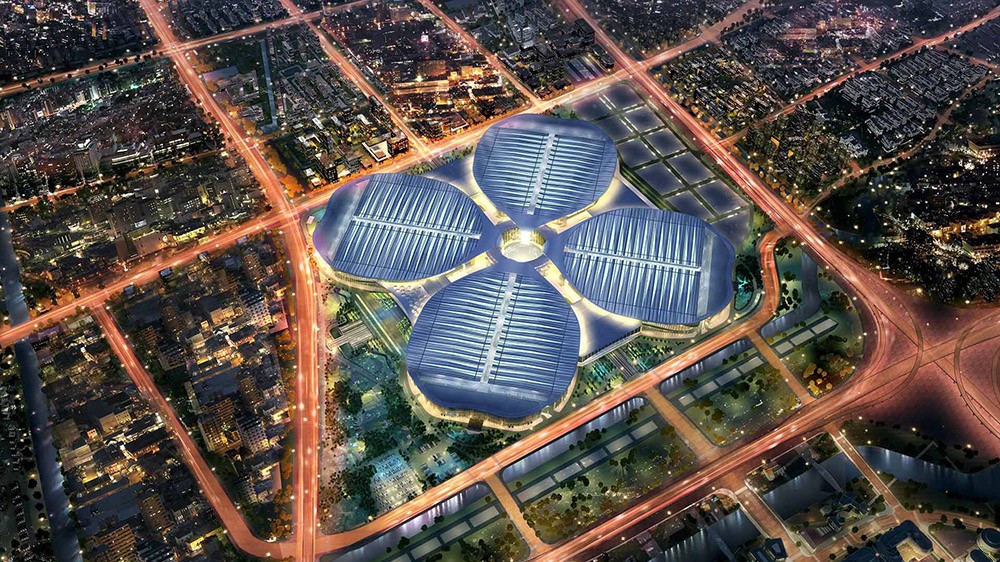
According to the "City of Opportunity
2019" report issued by China Development Research Foundation and PricewaterhouseCoopers
on March 21, Beijing, Shanghai, Hong Kong, Guangzhou and Shenzhen constitute
the most developed cities in China and jointly promote the coordinated
development of Beijing-Tianjin-Hebei, Yangtze River Delta and Guangdong-Hong
Kong-Macao.
The report points out that
innovation-driven, open and collaborative high-quality development model will
become the focus of urbanization in the next stage. The "9+2" urban
pattern in Dawan District of Guangdong-Hong Kong-Macao has basically taken shape.
It will become a benchmark for high-quality urban development in China in terms
of technological innovation, regional cooperation, opening-up and
infrastructure interconnection, and further promote China's economic
development.
"City of Opportunity" is a
research report published by the China Development Research Foundation in
cooperation with PricewaterhouseCoopers, which tracks and observes Chinese
cities in an all-round way. Since 2014, it has published six issues
continuously. Lu Mai, Secretary-General of China Development Research
Foundation, said: "China's economy is in a critical period of transition
to high-quality development. To achieve innovation, coordination, green, open
and shared development in China, the key is to seize cities. The development of
cities is of great significance for promoting the high-quality development of
the whole economy, creating new momentum for growth, coping with the downward
pressure of the domestic economy and the uncertainty of the international
environment.
"City of Opportunity 2019" is
based on the authoritative City Research Report "City of Opportunity"
published by PricewaterhouseCoopers worldwide. From 10 dimensions and 50
variables of "Intellectual Capital and Innovation", "Technical
Maturity", "Regional Important Cities", "Health, Safety and
Security", "Transportation and Urban Planning",
"Sustainable Development and Natural Environment", "Culture and
Resident Life", "Economic Shadow", “Cost” and “Business-friendly
environment” to make a thorough and comprehensive survey of 38 administrative
and economic central cities in China.
Yu Jiantuo, Assistant Secretary-General of China Development Research Foundation, pointed out: "The report closely follows the overall China’s development strategy, and constructs an evaluation index system of urban development suitable for China's conditions from economic, social and livelihood aspects. The report has had a wide range of social impacts and also has received widespread attention from business, academia and municipal governments at all levels."
Liang Weijian, a deputy manager partner of PricewaterhouseCoopers
in mainland China and Hongkong market, said: "Since the 19th National
Congress, a series of development strategies related to urban development have
been formulated, including the development strategy of" the Belt and Road
", the development strategy of Beijing-Tianjin-Hebei, the development
strategy of the Yangtze River Economy, and the development strategy of the Dawan
District, which will promote the construction of China's market economic
system. We will actively participate in China's modernization and contribute to
the development of China's new urbanization.
The number of cities observed in "City
of Opportunity 2019" has expanded to 38, with an expansion of about 27%.
Several important cities have been added in Beijing-Tianjin-Hebei, Yangtze
River Delta, Pearl River Delta and Hainan Provinces. Hong Kong and Macao were
included in the observation for the first time. The 38 cities are: Harbin,
Shenyang, Dalian, Urumqi, Lanzhou, Xi'an, Taiyuan, Beijing, Tianjin,
Shijiazhuang, Tangshan, Baoding, Jinan, Qingdao, Zhengzhou, Nanjing, Wuhan,
Wuxi, Suzhou, Shanghai, Hangzhou, Ningbo, Hefei, Fuzhou, Xiamen, Changsha,
Guangzhou, Shenzhen, Foshan, Zhongshan, Zhuhai, Chengdu, Chongqing, Kunming,
Guiyang, Haikou, Hong Kong and Macau.
In
the overall ranking, the top 10 cities are: Beijing, Shanghai, Hong Kong,
Guangzhou, Shenzhen, Hangzhou, Chengdu, Wuhan, Xiamen, and Nanjing.
From the perspective of dimensional
integration, Beijing ranks first in
"intellectual capital and innovation" and "economic
influence", Shanghai ranks highest in "regional important
cities", and Hong Kong ranks first in "business-friendly
environment" and "health, safety and security". Beijing and
Shanghai are China's mega cities, and they represent China in the international
urban agglomeration. Although Hong Kong's size is much smaller than that of
Beijing and Shanghai, due to its status as a major international financial
center and the development of the market economy, it is no doubt that it ranks third.
Guangzhou and Shenzhen are almost equal in total points, ranking fourth and
fifth.
Jin Jun, a partner of China Strategic
Consulting Department of PricewaterhouseCoopers, pointed out: "Although
the five cities of Beijing, Shanghai, Hong Kong, Guangzhou and Shenzhen have
different scales, status and development history, they have all played their
respective advantages in the historical stage of reform and opening up. As the
core cities of Beijing-Tianjin-Hebei, Yangtze River Delta and Guangdong-Hong
Kong-Macao, they will lead the coordinated development of the three urban
agglomerations. In the future, high-level openness and urban agglomerations
will jointly promote the high-quality development of Chinese cities.
In addition, several cities attracted
people's attention in the dimensionality ranking. Zhuhai ranks first in the
"Transportation and Urban Planning" and has maintained its leading
position in this dimension. Haikou has only been included in the scope of
observation since this year, ranking first in "sustainable development and
natural environment", highlighting the status of international tourism
island. Although Macao is small in scale, it is famous for its leisure tourism
industry and ranks first in "culture and residents' life". Baoding,
which has become the focus of attention due to the construction and special
positioning of Xiong'an New District, ranks first in the “cost” dimension,
indicating that its comprehensive cost is the lowest.
The top five cities in the 10 dimensions of "City of
Opportunity 2019":
•
Intellectual
Capital and Innovation ——
Beijing, Shanghai, Nanjing, Changsha, Wuhan
•
Technical
Maturity ——
Shenzhen, Guangzhou, Beijing, Hangzhou, Shanghai
•
Regional
Important Cities—— Shanghai, Beijing, Hong Kong, Guangzhou,
Chongqing
•
Health,
Safety and Security ——
Hong Kong, Shanghai, Macao, Beijing, Guangzhou
•
Transportation
and Urban Planning ——
Zhuhai, Nanjing, Xi'an, Guangzhou, Shenzhen
•
Sustainable
Development and Natural Environment ——
Haikou, Shenzhen, Foshan, Xiamen, Zhongshan
•
Culture
and Resident Life ——
Macao, Hong Kong, Changsha, Shanghai, Fuzhou
•
Economic
Shadow —— Beijing, Hong Kong, Shenzhen, Shanghai
and Hangzhou are tied for fourth place.
•
Cost —— Baoding, Shijiazhuang, Tangshan,
Taiyuan, Shenyang
•
Business-friendly
environment ——
Hong Kong, Xiamen, Ningbo, Hangzhou, Shanghai
He Guohui, the manager partner of
PricewaterhouseCoopers in Guangzhou of China, said: "Several cities in the
Dawan District of Guangdong-Hong Kong-Macao are
relatively concentrated in the forefront of the relevant dimensions. Guangdong-Hong
Kong-Macao has good basic conditions for the construction of world-class Bay Area
and world-class urban agglomerations. The coordinated development of the Dawan
District is conducive to promoting the exchange of talents and capital,
enhancing urban governance and promoting China's opening to the outside world.
In the future, driven by the three core cities of Hong Kong, Guangzhou and
Shenzhen, the development potential is unlimited.
This year, the Guangzhou Academy of Social
Sciences also actively participated in the research work of the "City of
Opportunity" report, and participated in the research of
"Intellectual Capital and Innovation", "Traffic and Urban
Planning" and other chapters based on the data collected by
PricewaterhouseCoopers and provides important support. The participation of
urban research institutions makes the observation of "City of Opportunity
2019" more pragmatic and practical. Zhang Yueguo, party secretary and dean
of Guangzhou Academy of Social Sciences, pointed out in the report that the Dawan
District of Guangdong-Hong Kong-Macao has unique advantages. Only by exploring the coordinated development of the Dawan
District of Guangdong-Hong Kong-Macao in practice can we give full play to this
regional advantage.






